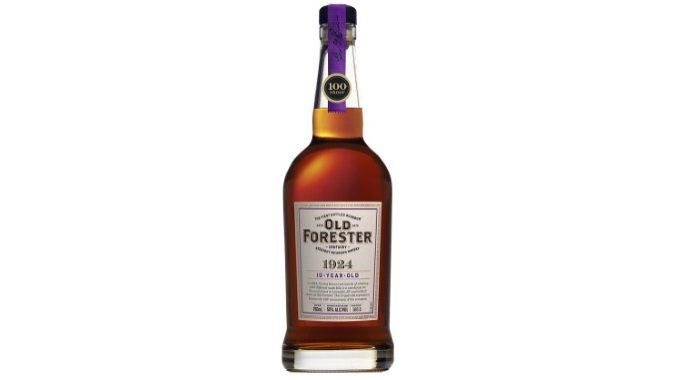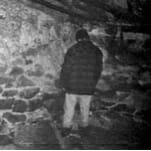Old Forester 1924 10 Year Old Bourbon Review
Photos via Old Forester, Brown-Forman
If you’re swinging through Louisville, Kentucky and visiting the beautiful downtown Old Forester distillery in the heart of Whiskey Row, you’re likely to walk away with a keener understanding of what an age statement does and does not truly imply in the world of bourbon whiskey. The flagship Old Forester year-round brands are a great educational tool for this purpose, because none of them historically carry age statements. From the basic 86 proof Old Forester bourbon, to the sought-after bottles of the Whiskey Row series such as 1910 Old Fine Whisky and 1920 Prohibition Style, the Brown-Forman company has always erred on letting the liquid speak for itself, demonstrating along the way that “age” is a largely meaningless figure for bourbon–especially when you’re talking about a company using heat-cycled warehouses, which dramatically speeds up the maturation process in the first place. Typically, only the annual Birthday Bourbon release carries a real age statement, but this is about to change with the release of the Whiskey Row Series’ newest addition, Old Forester 1924. And this bourbon is unlike the typical OF product in more ways than one.
To start with, as implied, Old Forester 1924 is the first entry in the Whiskey Row series to carry any concrete age statement, which is 10 years. But on an even deeper level, this is unlike the classic Old Forester bourbon distillate, because for the first time in modern Old Forester history it also comes from a different mash bill than the classic 72% corn, 18% rye, and 10% malted barley. Every single existing Old Forester bourbon is based on that same recipe, being differentiated through the intricacies of aging, blending and secondary maturations. But Old Forester 1924 is a tribute to a particularly odd footnote in the company’s Prohibition-era history, when the company purchased barrels of whiskey from other distilleries that had been closed down by the Federal prohibition of alcohol. Operating with its medical whiskey license, Old Forester was able to bottle and present those other well-aged bourbons as “Old Forester,” and the 1924 is a tribute to that strange era. This mash bill is 79% corn, 11% rye and 10% malted barley. That’s the same as Brown-Forman’s Early Times mash bill, which makes a lot of sense.
So what we have here is pretty much a different beast entirely for the Old Forester brand: An extra aged, age-stated bourbon from a different mash bill, a calculated departure from the usual. It’s intended as a “permanent” addition to the lineup, but a limited, annual release at the same time. And unfortunately, it comes with the expected major price bump: MSRP on Old Forester 1924 is a rather painful $115.
Now, in a vacuum, that number isn’t hugely surprising given that whiskey geeks are becoming increasingly inured to paying out the nose for “limited edition” bourbon releases of questionable quality. But where it suffers is in a direct comparison to the rest of the Whiskey Row Series lineup, bottles whose price points tend to reflect the market of a few years ago more than the hype-inflated level of today. It’s going to be inherently difficult for the 1924 to be interpreted as any kind of decent value at $115 when the Old Forester 1920 Prohibition Style (at 115 proof) is still on the shelves at $60, even without an age statement. Please note: This is not a call to say “1920’s price needs to rise,” though that is probably what will end up happening anyway. But it does mean that Old Forester 1924 is starting in an unenviable position, in terms of making its pitch, especially considering that 1924 is bottled at a mere 50% ABV (100 proof), the same as the perennially underrated Old Forester 1897 Bottled in Bond, which retails for a mere $50. This is the downside of Brown-Forman already offering high-value bottles in its own lineup.
-

-

-

-

-

-

-

-

-

-

-

-

-

-

-

-

-

-

-

-

-

-

-

-

-

-

-

-

-

-

-

-

-

-

-

-

-

-

-

-








































